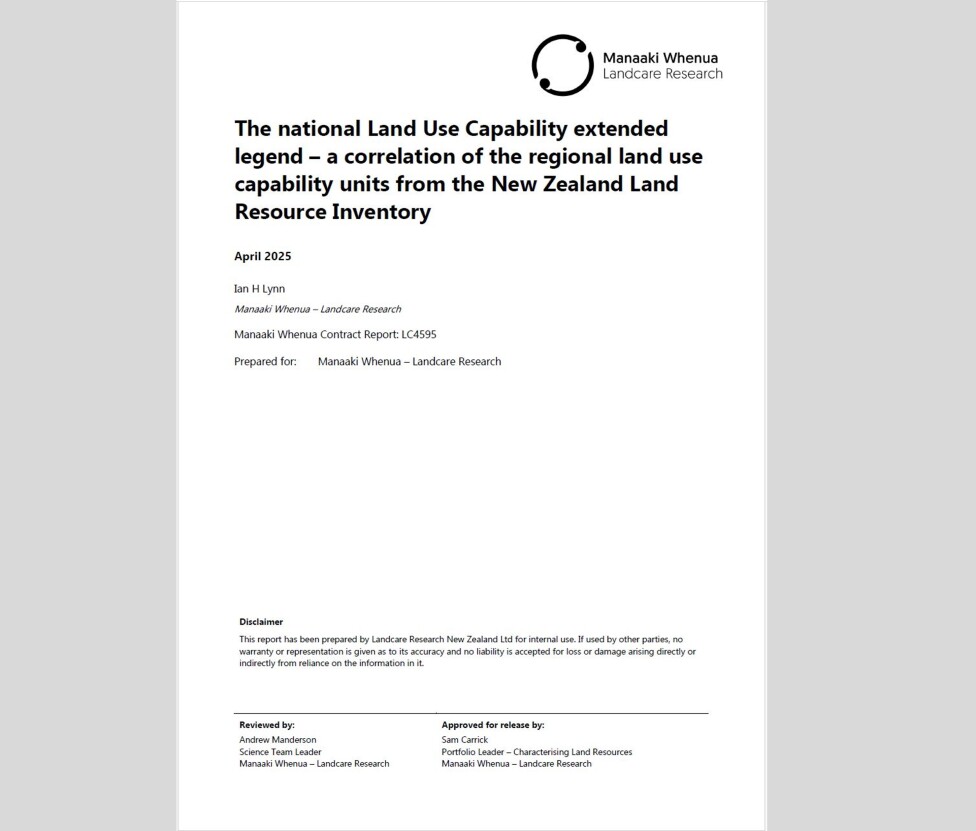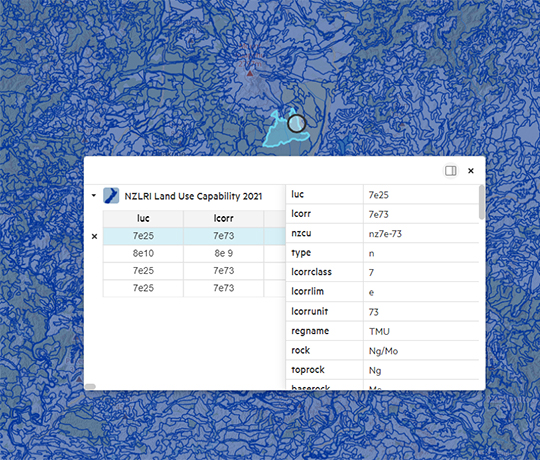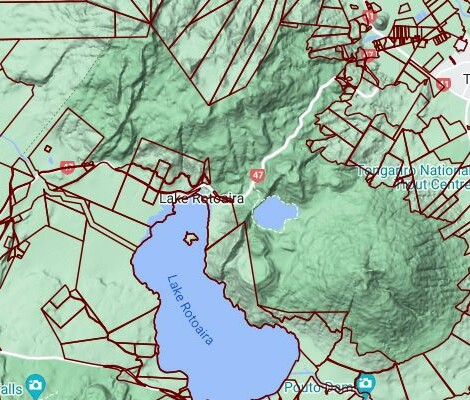The national LUC legend
A harmonised national LUC legend has been created. It is recommended to use this legend from now on.
While the 1st Ed LUC Units have been correlated across the North Island (Page 1985), a truly national correlation across the entire country incorporating the 2nd Ed coverage has only recently been completed by Ian Lynn from Manaaki Whenua – Landcare Research.
At the level of LUC Class the mapping and classification is already nationally consistent and does not require any correlation. At the LUC Subclass level national correlation can in some rare cases result in a different limitation (subclass) being recognised as being dominant in some cases.
The main differences are in the LUC Unit descriptions where any geographical references have been replaced by descriptions that relate to the inherent properties of the map unit. For example:
Wellington 4e3 (regional)
Rolling dissected downlands of slightly consolidated aeolian sands occurring near the coast in the Plimmerton-Pukerua Bay area. There is a potential for severe sheet and rill and moderate wind erosion when cultivated.
has been mapped to
NZ 4e51 (national)
Rolling dissected downlands of slightly consolidated aeolian sands below 100 m asl with well drained Brown and Pallic (yellow brown sands and intergrades between yellow grey earths and yellow brown earth) soils in moderate (1100-1200 mm) rainfall areas and a potential for severe sheet and rill and moderate wind erosion when cultivated.
These descriptions are pretty much the same except the bits in colour.
Using the national LUC legend provides a consistent classification across the whole country and avoids confusion. Most regional and unitary council areas incorporate multiple LUC extended legends (refer to Figure 14 of the LUC Handbook). Consequently, the same LUC unit code e.g., 3e1 may refer to similar or maybe different types of terrain in each of the respective region.
As a rule of thumb:
- When working ‘regionally’, i.e. within NZLRI regions, LUC regional extended legends of LUC Units and inventories should be used.
- When working nationally, across NZLRI regions, national correlation of LUC Units is helpful and can be used (but may be more generalised).
The national LUC legend has resulted from the correlation, amalgamation, and rationalisation of the most up to date regional LUC units (approx. 1,200). It incorporates all existing correlations across LUC regions. It also incorporates the 2nd Ed regional legends and preserves the provenance of the original 1st Ed regional units. It recognises 844 national LUC units which have been documented in an extensive spreadsheet.
The national LUC unit description follows a standardised format of physical characteristics, landform-landscape parameters, rock types, presence or absence of cover beds, soil parent materials, soils, and the soil characteristics (soil depth, texture, drainage, stoniness etc), altitude/elevation range, rainfall range, and erosion characteristics (present and potential erosion evaluations from passed documentation).
The establishment of the national Land Use Capability extended legend is documented in the following report:
Lynn I.H. (2025): The national Land Use Capability extended legend – a correlation of the regional land use capability units from the New Zealand Land Resource Inventory. Manaaki Whenua Contract Report: LC4595. 25 pp. Download report.
Appendices:
Appendix 1 - The Land Use Classification definition.
Appendix 2 - Correlation table for the national Land Use Capability extended legend (not included in report). Download correlation table.
Acknowledgements:
A large number of people have contributed their knowledge and experience to the preparation of this correlation. They include the authors of the original regional legends and bulletins and those who compiled the first and second edition LUC map coverages.
We also acknowledge Sam Carrick and Andrew Manderson for supporting this project, and James Barringer for providing digital assistance.

The easiest way to explore the national vs. regional LUC units is through OurEnvironment. Once logged on, select the data layer for Topic ‘What is the land capable of being used for?’, then click button ‘Explore Map’.
In map view, click the parcel of interest and a LUC report review will appear in the bottom right corner of the application (see image below). This lists the nationally correlate LUC unit, as well as historical regional units.

If you are working with LUC data in a geographical information system (GIS), you can download the latest LUC update from our LRIS platform: https://lris.scinfo.org.nz/layer/48076-nzlri-land-use-capability-2021/
Here, the national LUC legend is coded as attribute nzcu (see image below).

A short explanation of attributes:
- luc: Codes the regional LUC
- lcorr: For the North Island “lcorr” correlates the regional LUC unit to the North Island LUC correlation unit (Page 1985); for the South Island “lcorr” correlates the 2nd Ed Marlborough LUC units back to the South Island LUC classification (NWASCO 1983).
- nzcu: Codes the national LUC legend.



